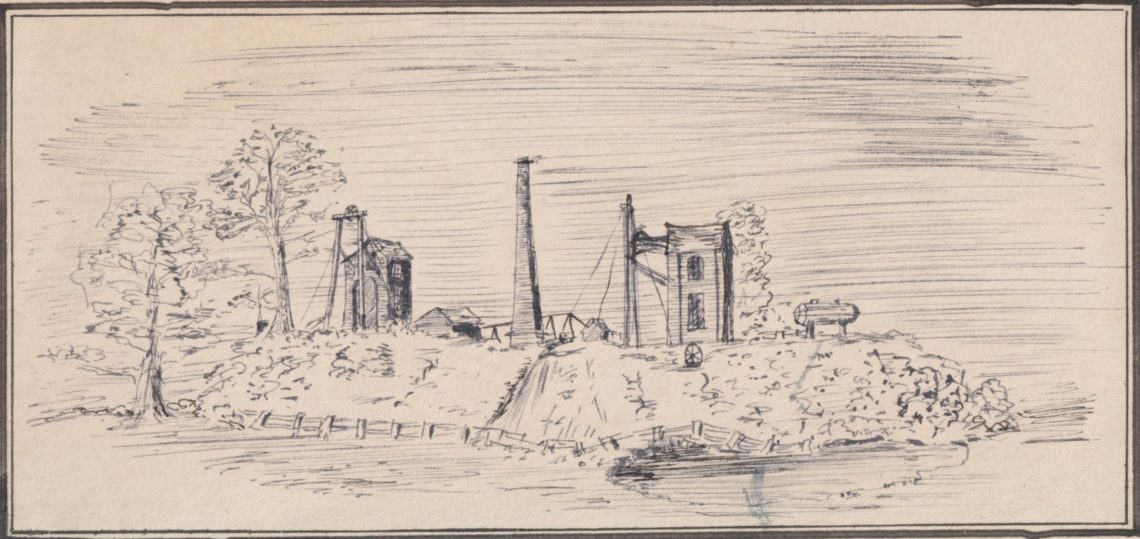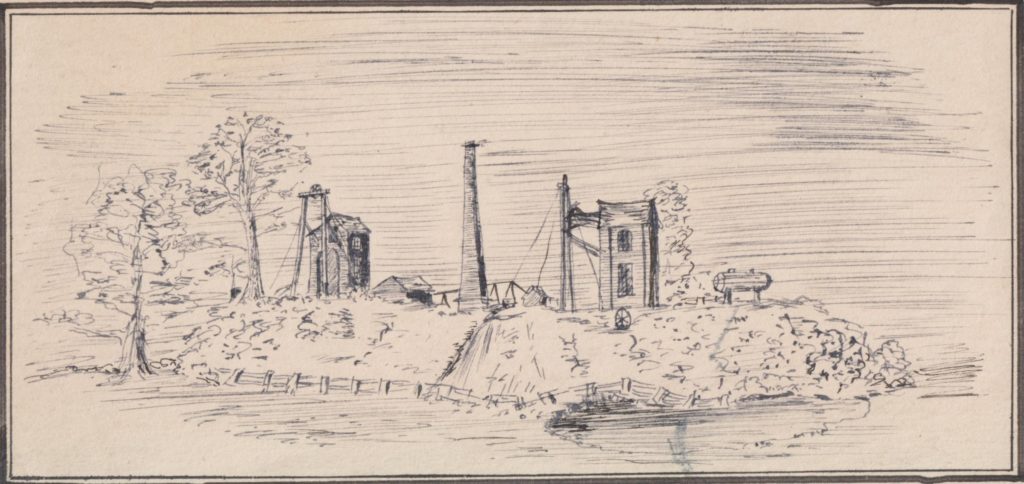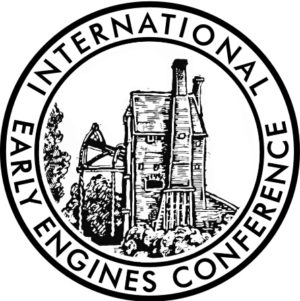
The Art of Researching Engines…

Three delightful images of a pair of Griff Colliery’s pumping engines near Nuneaton as they appeared in the mid Twentieth Century: pen and ink, some colour, and a photographic source of inspiration. Taken together they provide the historian, industrial archaeologist, early engine enthusiast, or just the artistically inclined alike, some food for thought.
Cornish pumps in Bermuda?
Bermuda?
Yes, not exactly. Not *that* Bermuda. In the 1890s the expansion of the Griff Clara Colliery undertaking led to the establishment of small pit village; what is now Bermuda village, a suburb of Nuneaton and named as a nod to Sir Edward Newdigate Newdegate (1825–1902) of Astley Castle and Harbury Hall who served as Governor of Bermuda (1888-1891). A rich seam of archival material lies in Warwickshire County Record Office.
They’re not Newcomens!
The seeker of early (that’s pre-1812 generally) engines might declare. Perhaps so.

Inventory No.: 1927-1619
© The Board of Trustees of the Science Museum Creative Commons Attribution-NonCommercial-ShareAlike 4.0 Licence
These are not atmospheric engines; not the historic early eighteenth century Griff engines from 1714 known to Sir Richard Newdigate, 3rd Baronet 1668-1727, spurred on by Stonier and Richard Parrot and George Sparrow and surveyed by Beighton. All subjects well-covered by Peter King and Suhail Rana in the First International Early Engines Conference in 2017, we might add.
Here we see two beam engines, two nineteenth century Cornish pumping engines presented in most atmospheric compositions by Robin Walker Clark (1927-2002) whose own early work experience as a surveying apprentice with Grimley & Sons, and in the drawing offices at Baggeridge Colliery and Jubilee Colliery gave him a keen eye for the working details of this industrial scene.

Barbara and Caroline?
It’s often been noted that some shafts sunk at Griff’s workings in the 19th Century were named after women. The two engines depicted here are thought to be Barbara (possibly sunk in the 18th Century but deepened in the 1830s), and Caroline (completed in the 1830s). Renewed interest in extending the life of the shallower workings around Griff, in the mid-nineteenth century saw increased investment in these two shafts by Griff Hollows – and the engines survived as the later Griff Colliery pumping works, hanging on until electrified pumping took over under the National Coal Board [corrections welcome – this is a work in progress!].

Historic England hold the The Watkins Collection – one of the country’s premier sources on stationary steam engines and their applications. At its core is the Steam Engine Record (SER) – a card-based photographic index to over 1,500 engine sites – gathered by George Watkins (1904-1989), representing over 40 years of collecting, visiting and photographing working and disused steam engines from the early 1930s onwards.
His SER record for the pair guides us on the engines:
SER 191a – Type: 2 Cornish pumps.
Maker and Date: 1) Goscote Foundry, pre-1831, called Caroline ; 2) unknown, date 1831
Cylinder / dimensions: 1) 60in, 7ft 0in; 2) 55in x 7ft 0in
But much remains unclear. How early is Barbara? did she have a prior engine? Of Goscote Foundry, or Iron Works, near Walsall, we read:
“There are several brass and iron foundries, of which the iron foundry at Goscote, belonging to Messrs. Otway and Wennington, is the most extensive, as well as the oldest, in this district; steam-engines of every power, cylinders, and cannon, besides the various smaller articles of cast iron, are founded here upon the most improved principles.”
‘Walsall’, in Lewis’s Topographic Dictionary, Volume IV, 1835
And shortly before, on 3rd May 1831, the The London Gazette announced the end of the former partnership of Harry Parkes, Thomas Otway, and Henry Wilkinson Wennington, leaving Otway and Wennington to take the business forward.
From small details, a thousand flashes of history arise: landed estates, the industrial revolution, coal pits and canals, so much to see, although nothing remains – but the images to remind and inspire further research. Did we mention the connection to George Eliot [a.k.a Mary Ann Evans 1819-1880] whose father worked on the Arbury Estates?
Further Reading:
Watkins, George, Stationary Steam Engines of Great Britain. The National Photographic Collection, Volume 6: The South Midlands. (Landmark Collector’s Library), Landmark Publishing, 2003 [ISBN-10: 1901522733; ISBN-13: 978-1901522730]
Fordham, D.N, Coal and Water. An Industrial History of Arbury, Ringwood, 2001.
Manchester City Art Gallery, Art and the Industrial Revolution, Manchester City Art Gallery, 1968 [catalogue of the exhibition 31st May – 14th July 1968]
Anney, Thomas G., Death on the Warwickshire Coalfield: an examination of the contribution of miners, coalowners and the State to the decline in mining fatalities in the British coal industry in the period of expansion 1840 to 1913. PhD Thesis submitted for the degree of Doctor of Philosophy at the University of Wolverhampton, April 2013 (available via WIRE/University of Wolverhampton repository)
Grant, Eric G., The Spatial Development of the Warwickshire Coalfield. Thesis presented for the degree of Doctor of Philosophy of the University of Birmingham, 1977 (available via British Library EThOS service)
Lewis, Samuel, A topographical dictionary of England, Volume IV, London: S. Lewis, 3rd edition, 1835 [Hathi Trust]
Paterson, David, Fair Seed-Time: Robert Evans, Francis Newdigate and the Making of George Eliot, Troubadour, 2019 [ISBN 978-1-83859-146-5]


